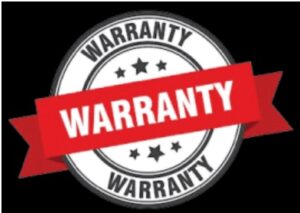
Have you ever felt bewildered when you came across the fine print of a warranty or guarantee? It can seem like a labyrinth, full of legal jargon and complicated terms, leaving you more confused than informed. Let’s break it down together.
Understanding Warranties and Guarantees
Warranties and guarantees are terms you’ll often see when purchasing products. They essentially serve to assure you, the customer, that your investment is protected. However, the specifics vary significantly between different items and brands.
What is a Warranty?
A warranty is a written promise from the manufacturer or seller about the condition of their product and how issues will be handled. In most cases, a warranty will include specific terms, so it’s essential to read these carefully.
Consider the scenario where you buy a new laptop. Most likely, it comes with a warranty that outlines what happens if it breaks down. It typically stipulates the duration of the warranty, the nature of coverage, and what you need to do to be eligible for any repairs or replacements.
Types of Warranties
There are generally two types of warranties:
- Express Warranty: This is explicitly stated, usually in writing. It spells out what is covered and for how long.
- Implied Warranty: This is not written down; it’s a legal assumption that the product will function as expected. These warranties differ by jurisdiction.
What are Guarantees?
A guarantee is more of a promise linked to customer satisfaction rather than the product’s quality itself. If you’re not satisfied, the company might offer a refund or exchange. It’s like a safety net, ensuring you have options if the purchase doesn’t meet your expectations.
Key Differences Between Warranties and Guarantees
It can be tricky to differentiate warranties and guarantees since they both aim to protect consumers in different ways. Here’s a simple breakdown:
| Aspect | Warranty | Guarantee |
|---|---|---|
| Objective | Covers product malfunctions and defects. | Assures customer satisfaction. |
| Time Frame | Usually has a specific duration. | Often valid as long as the conditions are met. |
| Documentation | Typically provided in writing. | Can be less formal but still requires proof of purchase. |
Do Companies Offer Warranties or Guarantees?
In most cases, yes, companies do offer warranties or guarantees, but the extent and specifics can vary widely. It’s crucial to know what you’re getting when you make a purchase, so let’s break this down by types of products and services.
Electronics and Appliances
With electronics, warranties can be pretty standard. Many providers offer a one-year warranty, but some high-end brands extend this to two years or even a lifetime. Appliances might come with a limited warranty covering major components for several years.
Example Case
If you buy a washing machine, the warranty may cover the drum and motor for five years but exclude user-related damages like power surges. If you happen to receive a defective unit, knowing what is explicitly covered saves you from unnecessary costs.
Vehicles
Cars are another complex area when it comes to warranties and guarantees. New cars typically come with a manufacturer’s warranty that covers various components, while used cars might offer a limited warranty, depending on the seller.
| Coverage Type | Duration | Notes |
|---|---|---|
| Basic Warranty | 3 years or 36,000 miles | Covers most basic issues. |
| Powertrain Warranty | 5 years or 60,000 miles | Covers engine, transmission, etc. |
| Corrosion Warranty | 5 to 12 years | Protects against rust and corrosion. |
Home Products and Services
When it comes to home products or services, such as furniture, flooring, or even renovation services, the warranties may vary. Some furniture comes with a lifetime warranty on structural defects but excludes wear and tear from normal usage.
Importance of Reading the Fine Print
Before finalizing a purchase, make sure you check the policy regarding warranties and guarantees should you need it. What seems like a great deal initially could turn sour if the coverage isn’t what you expect.
Benefits of Warranties and Guarantees
Navigating warranties and guarantees don’t have to be intimidating. Understanding what they offer can establish confidence in your purchasing decisions. Here are some of the clear benefits:
- Financial Protection: They can save you money on repairs or replacements.
- Peace of Mind: Knowing that you have support if something goes wrong can make purchasing decisions easier.
- Increased Value: An extended warranty might make a product more desirable in the resale market.
How to Make Claims on Warranties and Guarantees
So, you’ve found yourself in a situation where you want to make a claim on a warranty or guarantee. What now? Let’s go through the process step-by-step.
Step 1: Gather Documentation
Before you do anything else, make sure you have all relevant documents ready:
- Receipt or Proof of Purchase: This is usually the first piece of information you need.
- Warranty or Guarantee Document: It’s crucial to refer to what is stated in the fine print.
Step 2: Check Coverage and Terms
It’s essential to understand what is covered. Read through any conditions laid out in the documentation to ensure that your situation falls under the warranty or guarantee coverage.
Step 3: Contact Customer Service
Reach out to the company’s customer service department. Here’s how to approach this:
- Be Prepared: Have all your documents at hand.
- Be Clear: Explain the issue clearly and provide evidence if necessary.
- Be Polite: A friendly conversation can often yield better results.
Step 4: Follow Up
If your initial claim isn’t processed as expected, don’t hesitate to follow up. Being proactive often speeds up the process and ensures that your claim isn’t forgotten.
Common Misconceptions about Warranties and Guarantees
There are quite a few misunderstandings that can lead to confusion around these topics. Clearing these up can save you from frustrating situations in the future.
They Cover Everything
Many consumers believe that warranties or guarantees cover all issues. However, this is rarely the case. Always read the fine print to know precisely what is and isn’t included.
They’re All the Same
Not all warranties or guarantees are created equal. Terms can vary significantly even within the same category of products.
Expiration Dates Turned Into Myths
It’s widely assumed that warranties last for just a year, but many products come with different timeframes depending upon their type. Always check the coverage duration.
Tips for Choosing Products with Good Warranties or Guarantees
When you’re in the market for a new gadget or appliance, consider opting for brands that offer better warranty or guarantee options.
Research Brands and Products
Some brands are notorious for their stellar customer service and generous warranty policies. Look for reviews that touch on the after-sale experiences of past customers.
Compare Terms
Before making a purchase, compare the warranty or guarantee terms across similar products. It’s worth taking the time to ensure you’re getting the best deal.
Prioritize Quality
Sometimes, investing a little more upfront can lead to significantly better warranty coverage. Higher-quality products generally come with better guarantees, which can be worth it in the long run.
Final Thoughts
As you navigate the world of warranties and guarantees, remember that your understanding is key. It may seem like an added layer of complexity, but knowing what you’re entitled to can save you both time and money.
Whether you’re buying a car, a new appliance, or furniture for your home, take a moment to consider the warranty and guarantee options. Having this knowledge empowers you as a consumer, giving you the confidence to make informed decisions.
Ultimately, you deserve products that offer both quality and assurance. Knowing that you’ve invested in something that stands behind its promises will enrich your purchasing experience significantly.
